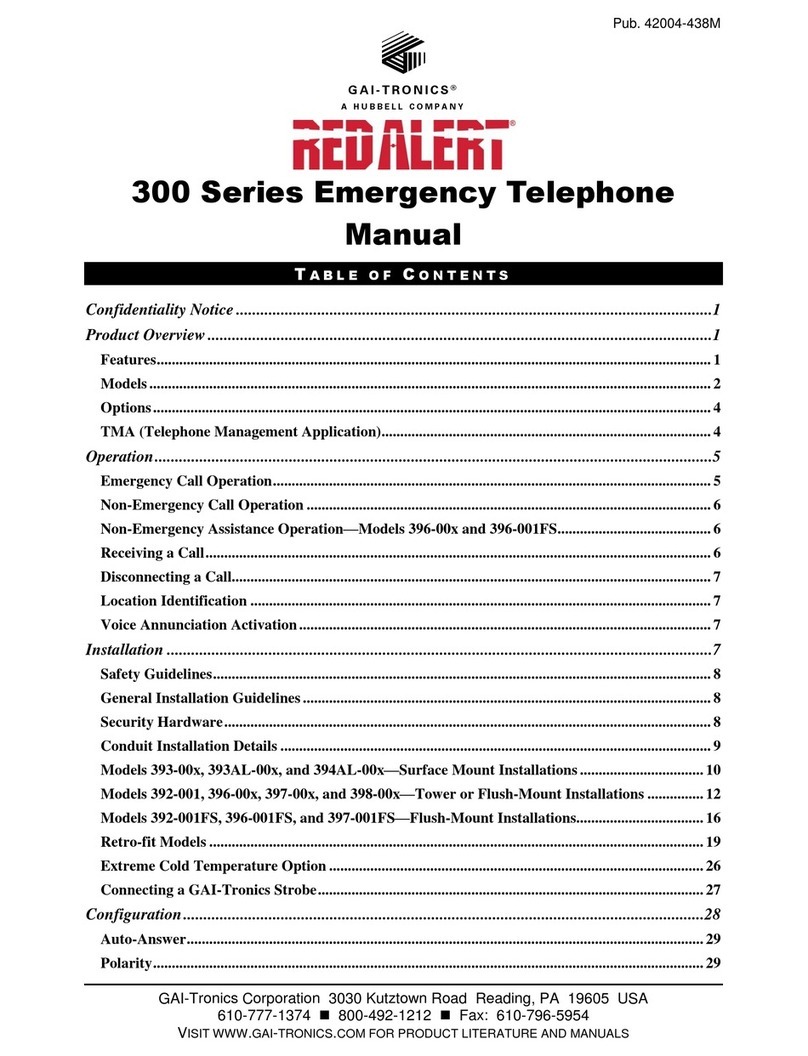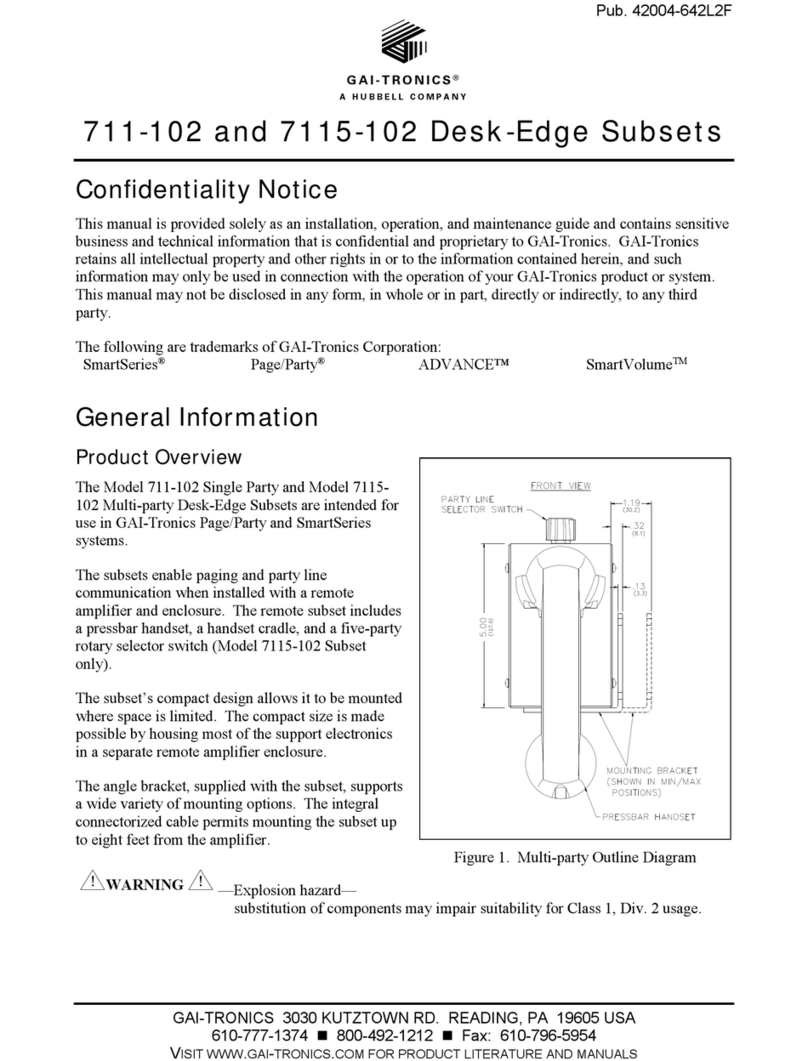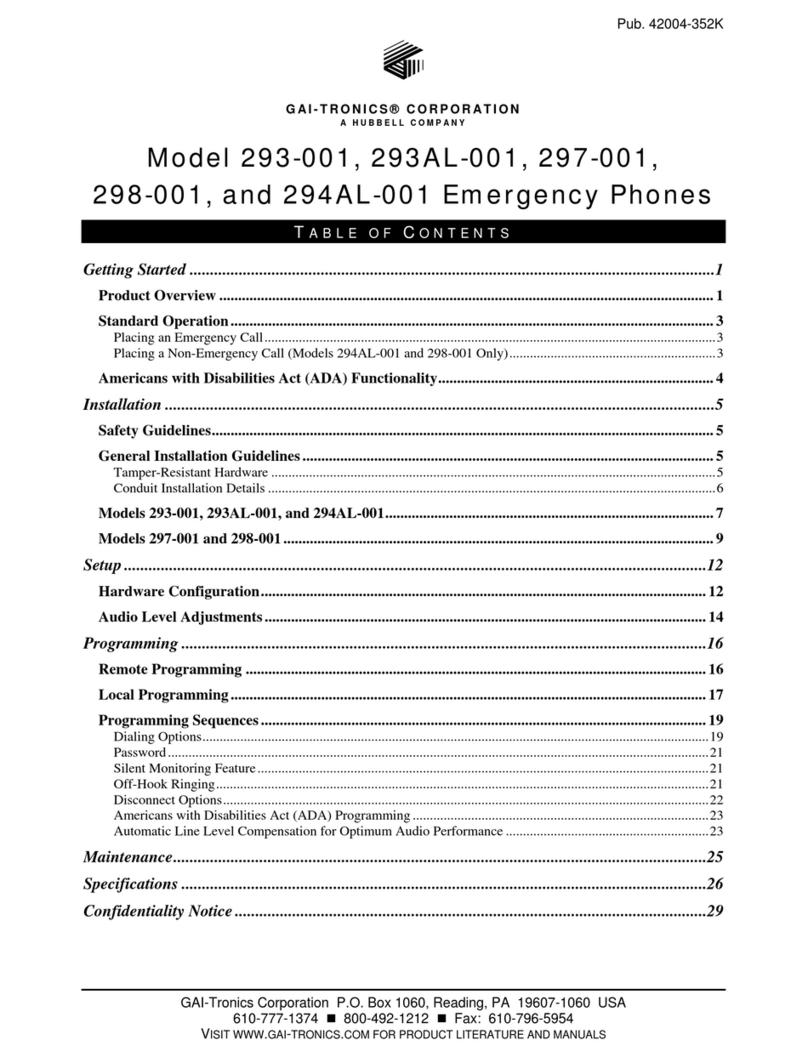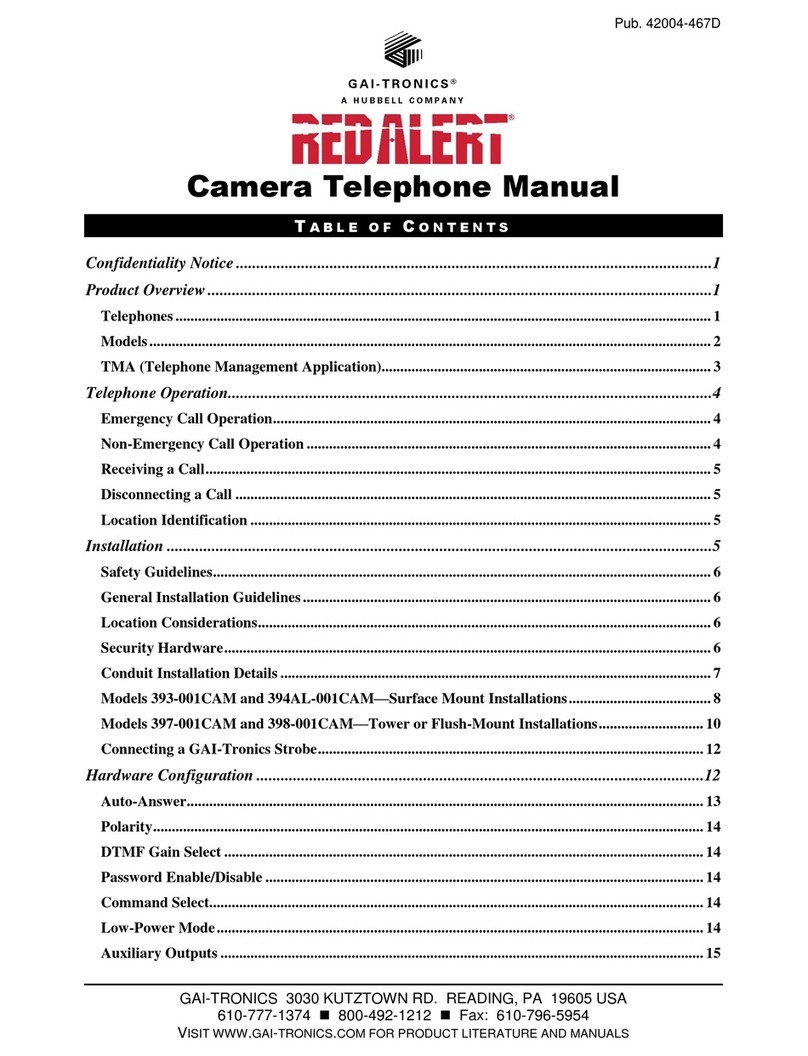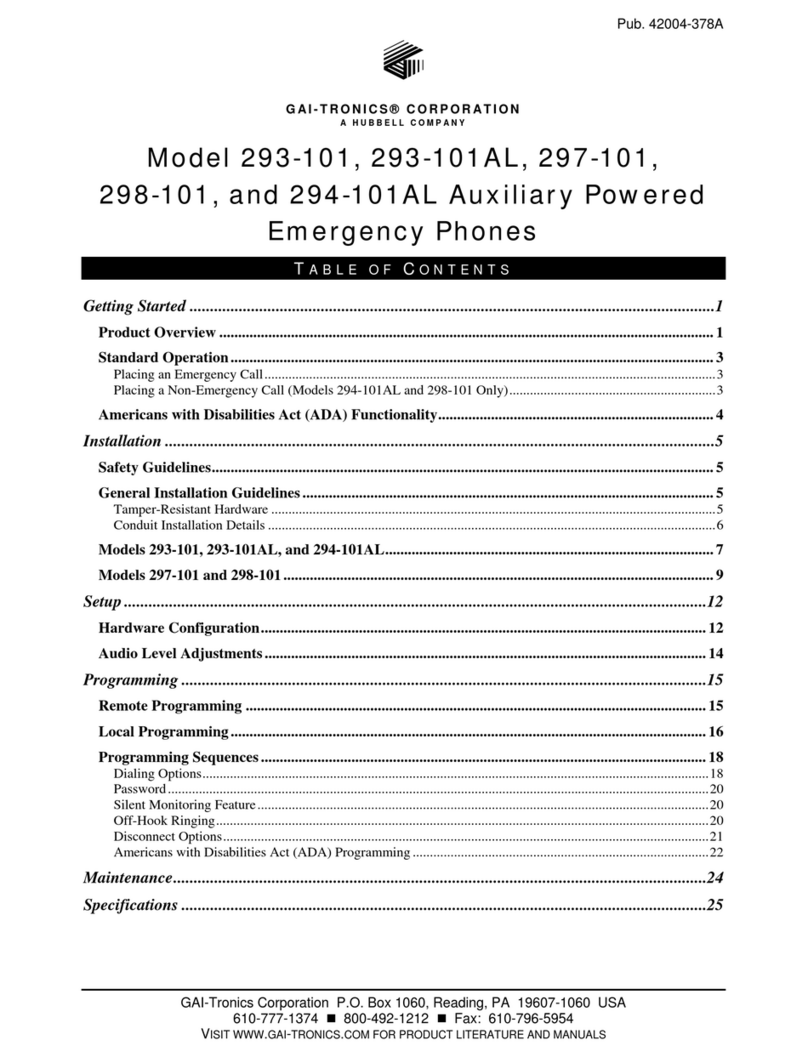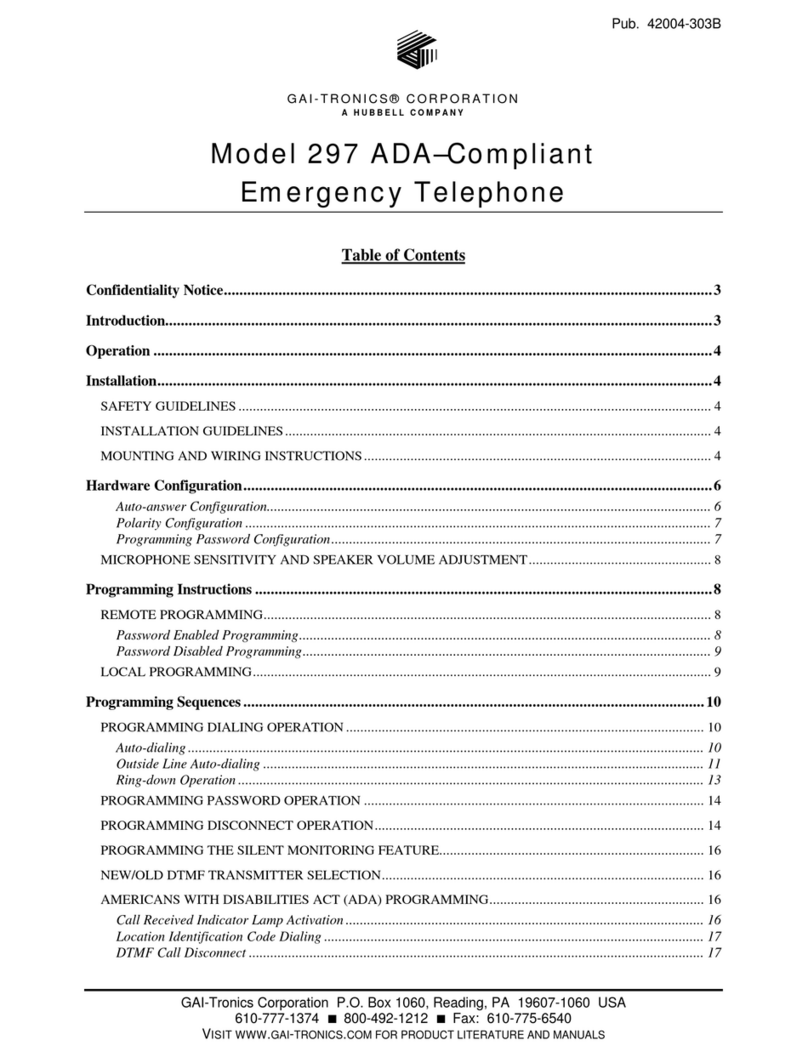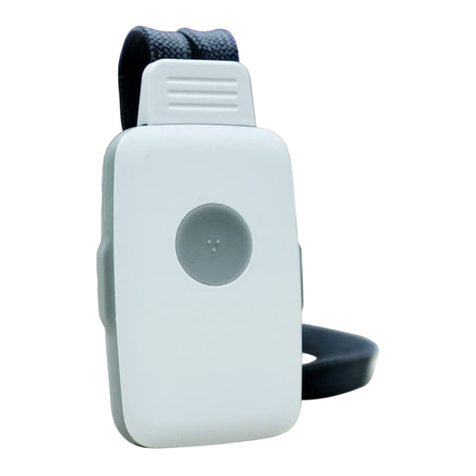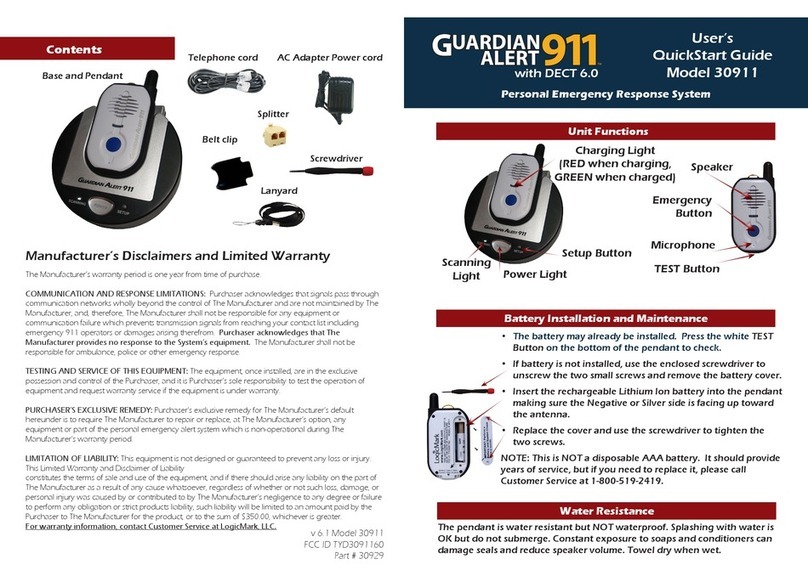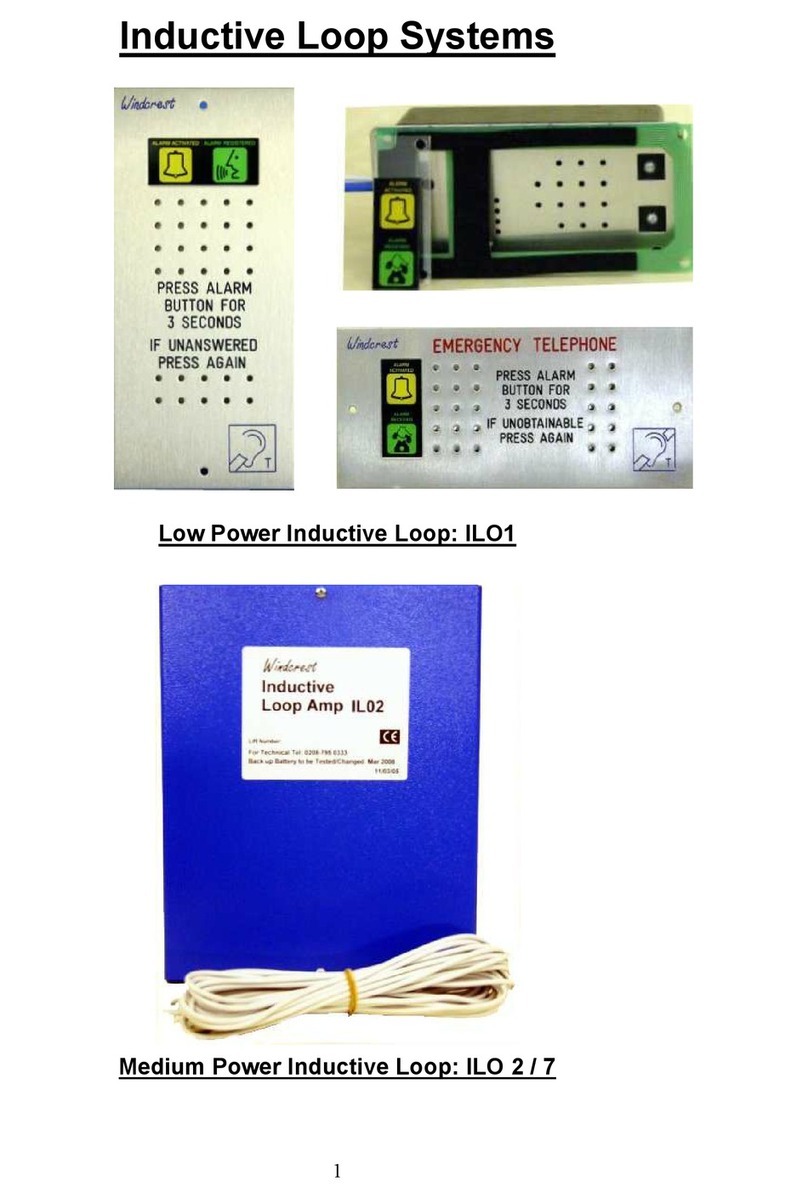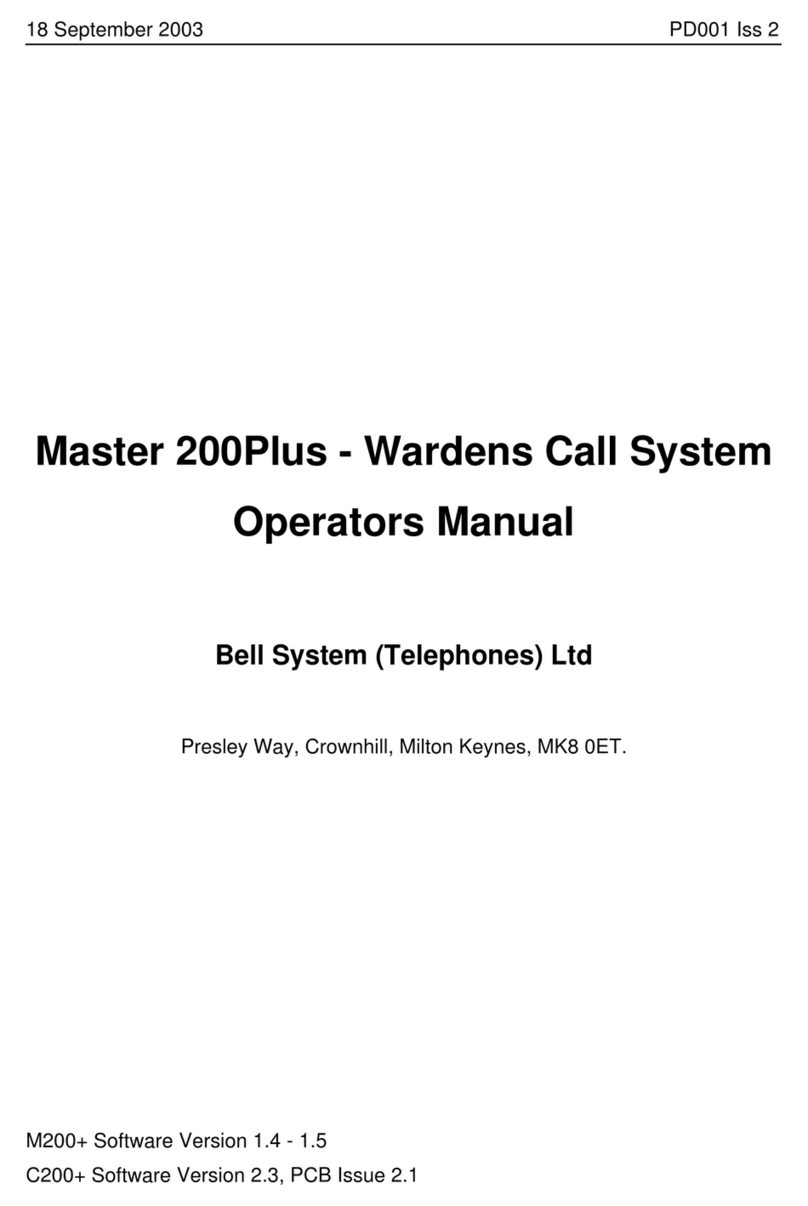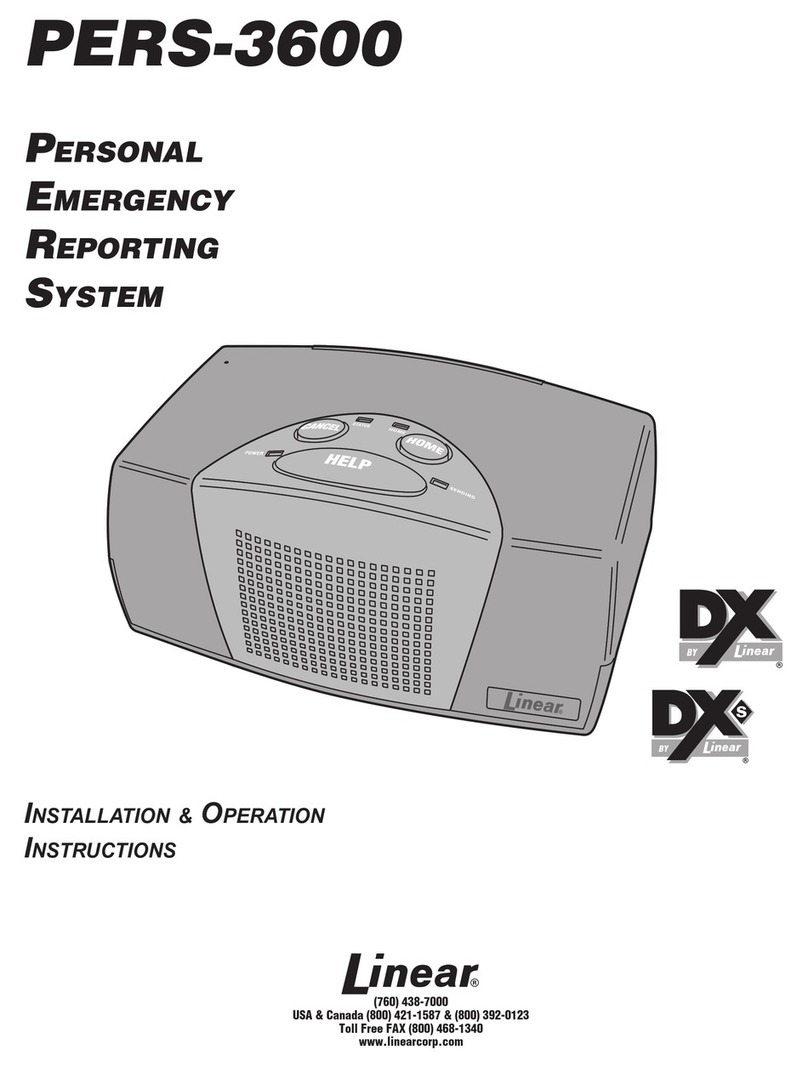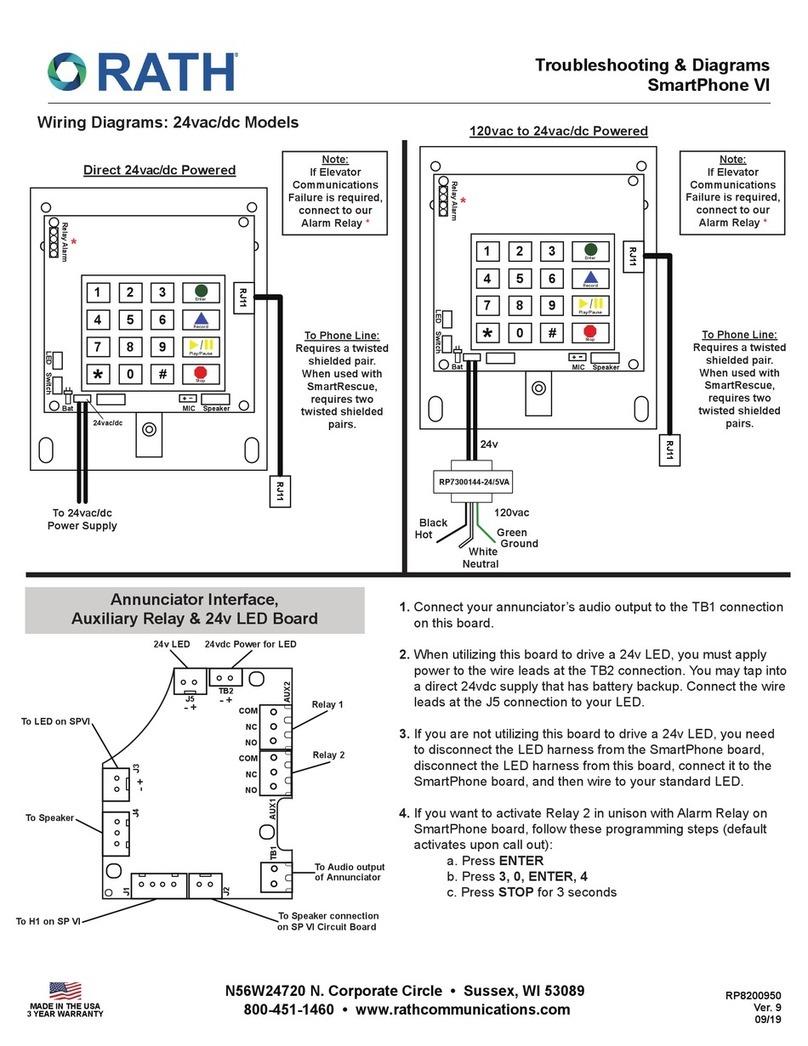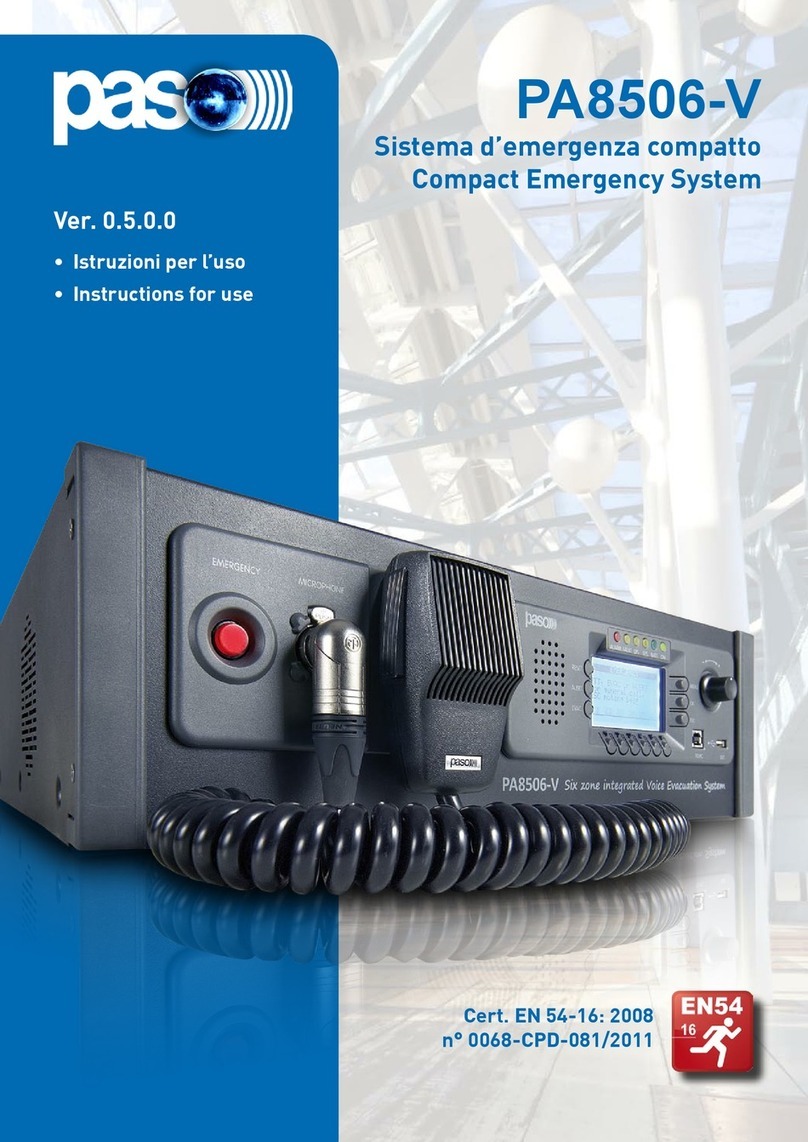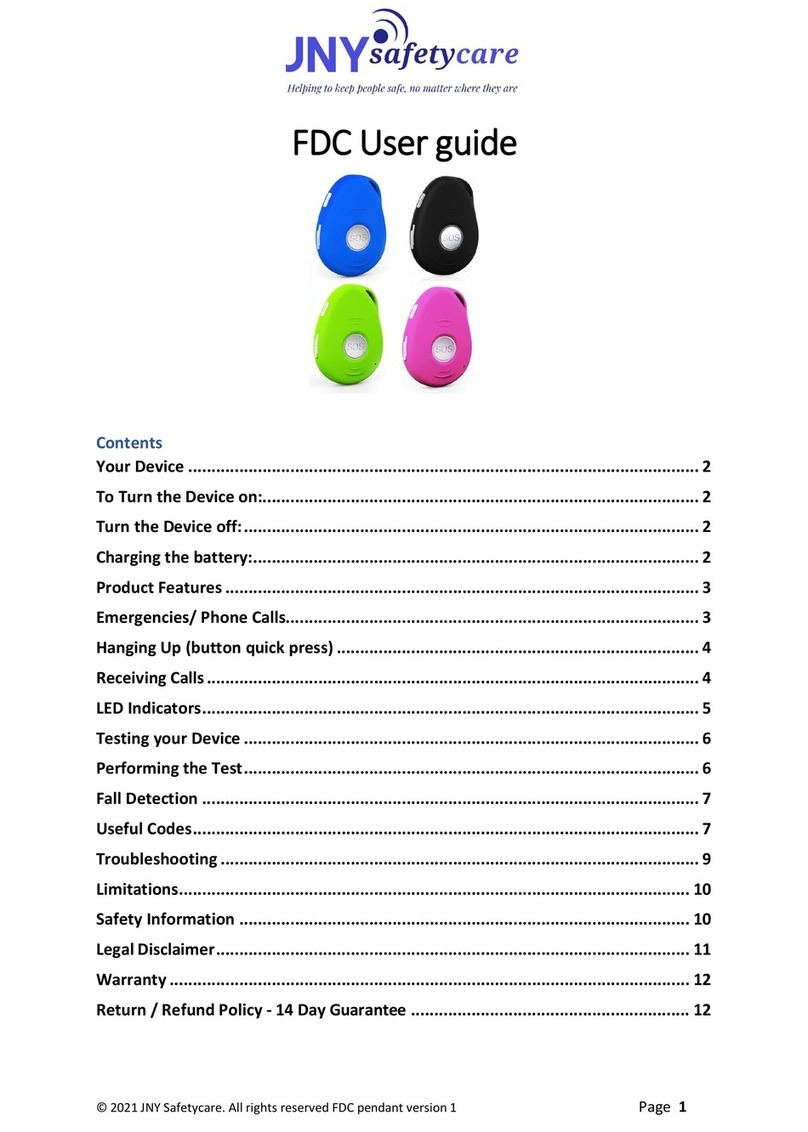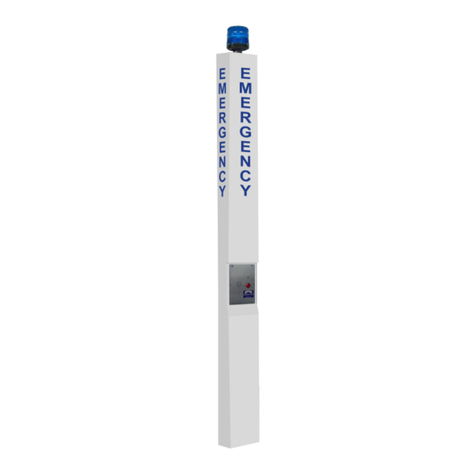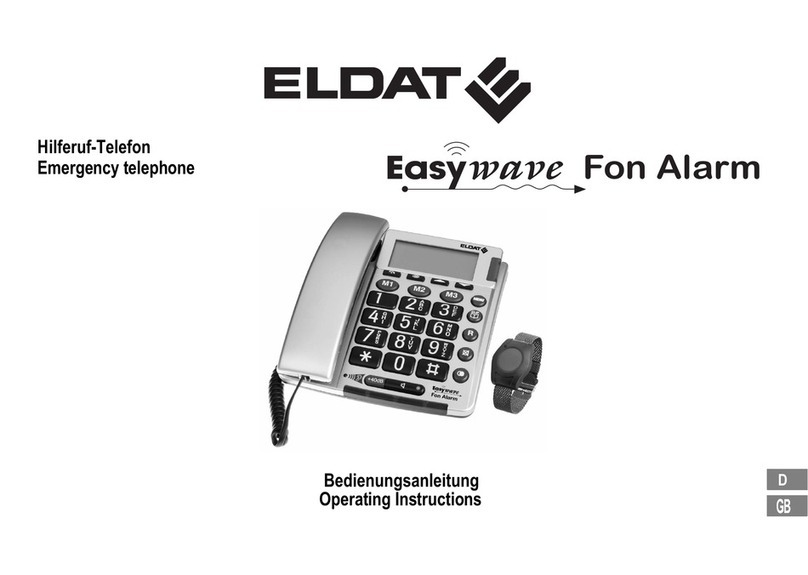
Pub.:42004-661L2C
GAI-Tronics Corporation P.O. Box 1060, Reading, PA 19607-1060 USA
610-777-1374 n800-492-1212 nFax: 610-775-6540
VISIT WWW.GAI-TRONICS.COM FOR PRODUCT LITERATURE AND MANUALS
GAI-TRONICS® CORPORATION
A HUBBELL COMPANY
S.M.A.R.T. Emergency Phones
Models 293SL, 293ALSL, 294ALSL, 297SL, and 298SL
TABLE OF CONTENTS
Confidentiality Notice................................................................................................................1
Introduction...............................................................................................................................1
Operation...................................................................................................................................2
Placing an Emergency Call from a S.M.A.R.T. Phone .....................................................................2
Placing a Non-Emergency Call (Models 294ALSL and 298SL Only) ..............................................3
Disconnecting a Call Remotely..........................................................................................................3
Installation.................................................................................................................................3
General Safety Guidelines .................................................................................................................3
General Installation Guidelines.........................................................................................................3
Installing a 293 or 294 Series Phone..................................................................................................4
Installing a 297 or 298 Series Phone..................................................................................................6
Speaker Volume Adjustment.............................................................................................................8
Relay Output..............................................................................................................................9
External Power .............................................................................................................................................. 9
Connecting a Beacon ................................................................................................................................... 10
Programming...........................................................................................................................11
Enter the Programming Mode.........................................................................................................11
Basic Programming Commands......................................................................................................12
Auto-dial Memory ....................................................................................................................................... 12
Call Time-out .............................................................................................................................................. 13
Line Ring Detection..................................................................................................................................... 13
Maintenance ............................................................................................................................14
Reference Material...................................................................................................................14
Table R-1. Basic Programming Commands...................................................................................14
Table R-2. Default Configuration...................................................................................................14
Specifications...........................................................................................................................16
